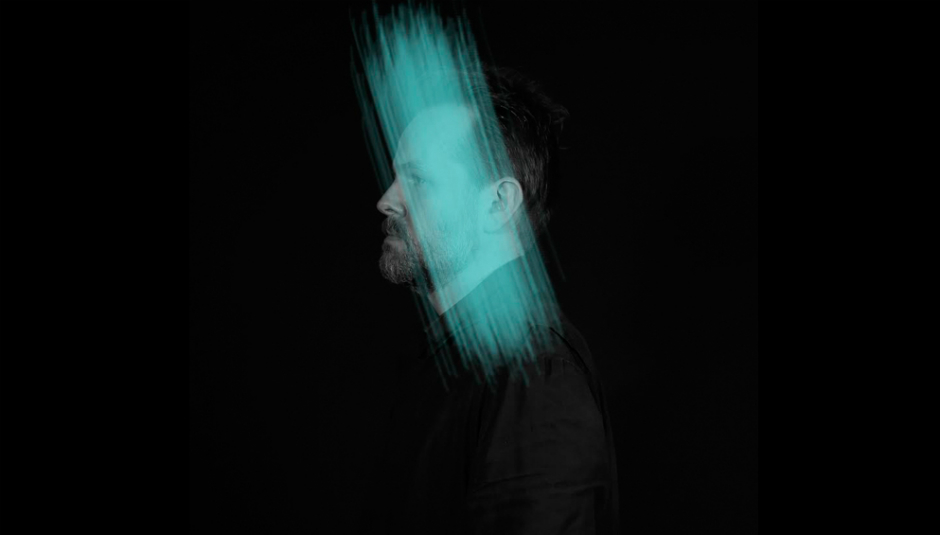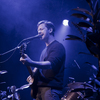Long before there were any Valgeir Sigurðsson albums in the world, many records bore the mark of his masterful production and engineering. Though he produced two albums in 1998, it wasn’t until he began working with Björk in 2000 that people began to be aware of his prowess. Sigurðsson worked on Selmasongs, Vespertine, Medúlla and Drawing Restraint 9. The two parted amicably so Sigurðsson could work on other projects, including his own music. Little did anyone know Sigurðsson was just getting started contributing to the soundscape of his native Iceland—and well beyond.
Sigurðsson owns Greenhouse Studios in Reykjavik, which is also his home. He finds it important to share space and connect with the musicians who record there. He serves as producer, mixer, engineer, programmer, and composer for artists who record there. His client list includes the likes of Sigur Ros, Brian Eno, Bonnie ‘Prince’ Billy, Feist, and Stars Of The Lid. Greenhouse Studios is also the nerve center for artists on the Bedroom Community label that Sigurðsson started in 2006. The Bedroom Community roster is a tiny but eclectic grouping of artists, all of whom Sigurðsson works with intimately. The label has fostered the careers of such critically acclaimed musicians as Nico Muhly, Ben Frost, and Sam Amidon.
Though Sigurðsson’s genius as a producer/engineer is staggering, the incredible depth of his vision best emerges in his own music. Whether he is crafting solo albums or writing commissioned pieces for orchestras, his works are all as carefully considered as they are deeply felt. His first solo album, Ekvílibríum, featuring guest stars Bonnie ‘Prince’ Billy, Dawn McCarthy, and Nico Muhly, was released in 2007 to great acclaim. Reviewing the album, [Impose] (http://www.imposemagazine.com/reviews/ekvlibrum--valgeir-sigurdsson) wrote that “Ultimately the album’s strength is in Sigurdsson’s arrangements – painstaking in detail, yet fluid to the listening ear.” That level of laborious effortlessness has persisted through his output. Sigurðsson’s work ethic is inimitable, as is his meticulous ear for even the smallest details. Even without lyrics, he can tell a story, and he always leaves room for listeners to add their own interpretation of his work.
All of that holds true on Sigurðsson’s latest solo work, Dissonance. It’s his first solo release since 2012’s Architecture Of Loss, and the new record is an ambitious, immersive affair. The title track clocks in at nearly 23 minutes; those 23 minutes, based on an elongation of a Mozart movement, work perpetually towards building and destroying, creating and erasing, expanding and collapsing. The rest of the album is comprised of two long works (‘No Nights Dark Enough’ and ‘1875’) that Sigurðsson broke into tracks for listeners’ convenience; however, one track flows seamlessly into the next. One listens to the album and feels they’ve lived a few more lifetimes, having voyaged Sigurðsson’s terrain of despair and hope and history and anticipation and wonder.
DiS: How do you want people to feel when they hear Dissonance?
Valgeir Sigurðsson: I'd rather not try to decide for them. I'm exploring a lot of my own emotions, feelings, and things that I've gone through, but I'd still like it to be open enough that people can take away from it what they hear and respond to it in a personal way. The music, I've been told that it's quite emotional and dramatic in parts. I've deliberately selected these pieces to work together as a whole. Together they reflect well with what I've been up to.
When you were making these songs, or when you listened to them, is there anything you visualized? Did you get any imagery in your head?
A lot of that happened when I was writing those pieces, but I'm not necessarily writing to a visual. My music tends to evoke some kind of visual element or tends to have this…people say it has a cinematic quality. Actually, working on the artwork, I felt like we had captured the visual quite well in the cover image. It's the gloomy, dusky outside and the glowing inside of that tunnel that I'm standing in. But of course, that's just one way of seeing it. For me, that made a lot of sense. It and the title worked together well.
You referenced the light from within. Do you feel like there's hope on this album?
Yeah, absolutely. I think there's a lot of hope on it. It points forward. It has a big contrast between darkness and light for me. It has these extreme shining moments of light and often it's about this push and pull between the light and the darkness and the in-between space. There is definitely a lot of light on the album.
Is the title track the longest song you've ever released?
Probably. There are three pieces, even though they're separated into movements, both ‘No Nights Dark Enough’ and ‘1875’. They are composed as long pieces. And I am always thinking of this album as consisting of three works, basically, not eight tracks or whatever it is on the CD or the Spotify version. I could not do that with 'Dissonance.' I could not break that up into shorter movements because it feels like you can't jump into it at any point. You have to go from beginning to end.
That song intrigued me because I wondered how you planned it out ahead of time to make it cohesive without it being boring.
I had a little help from the past. The piece is based on a Mozart movement, the short movement from ‘String Quartet #19’ that Mozart wrote, and so I physically time-stretched the piece. I didn't change how he had structured the chord changes or the progression of the piece. What I did was to stretch it out and I started by stretching it only to ten minutes, and then I thought, okay, this is happening way too fast still. So I had to slow it down even more. I slowed it down until I felt that the pacing was right. I'm glad you think that it sustains the 23 minutes because I'm sure some people will not agree with you. And that's something I can't consider when I put it down. I can only go with my own instinct on how it should progress and how fast or slow I felt it should move.
Then, of course, in the production, the challenge was to keep it interesting sonically and keep the development happening. Even though I had mapped it out to be this structure and this length, then it was quite a time-consuming thing to make sure that each section was represented. You can't do too much too soon. It was important to step back and get perspective.
It's almost like working on a big painting. You have a canvas in front of you that is the size of an entire wall. You probably sketch out the form, and you put the form on the first layer of the canvas, and then you start working on details within the canvas. Then you start layering in color. Then you take a step back and you see the whole image and then you see things that you could potentially improve with the next layer. Then you take a step back. You get in there with a different color. You add. You amend and fix. And so on and so on. You keep going, zooming in and zooming out. With a long piece like this, you really need to do that. You're always working on little fragments and little sections and little details, but then what these details do in the context of everything else, that's in the picture. You need to see it. You need to step back to see it. So I think I approach it very much like a painting done in layers, with details and colors added gradually until there's something that forms a whole.
Have you performed all of the album live yet?
That's another thing I had the luxury of. With the ‘Dissonance’ piece, I played that quite a lot actually, and I was playing it during the mixing and processing and working on the track. So actually what I do a lot when I'm playing that track live is to work on the dynamics of the track, and that's one thing that I discovered in the mixing process putting this together. The dynamics are as important as anything else with this piece. As in, if you push too hard too soon, it really affects what comes after it. So you have to be a bit patient. Even if there's something that sounds like it could be a climax at five minutes, there is still 18 more minutes to go, so wait till you have established something. This track is all about building these dissonant parts that dissolve into something. It's kind of playing with perception and playing with darkness and light and color and movement, and you just have to manage that in a certain way. I learned a lot being able to do it live.
With the other pieces, ‘No Nights Dark Enough’ and ‘1875,’ they were both commissions for orchestra. So they were actually performed a couple times before I got to record them. After the performance and going to the orchestra rehearsal and listening and giving comments to the orchestra conductor and actually changing a little bit of the score, I actually took the score for both pieces and revised before the next performance. Before the recording, then, there was already a history and I had learned enough about the pieces to take them into the studio. This is an unusual thing for me. Actually, it's the opposite of my usual process in the past. Especially that I've created pieces in the studio and tracked them before ever thinking about a live performance.
What were some other new things you did that were new for this record?
That's a major one, I think. It's all scored, this record, from top to bottom. Which has been more of a mix in the past. I've recorded first and then made arrangements on top of that in editing. That's the new major thing that I think this album has. And of course being so large-scale, like all the pieces being written for lots of people and for long durations and for specific things.
Can you tell me about ‘1875?’ You said it was commissioned, but what were the circumstances surrounding that?
So that was an orchestra in Canada that commissioned this work for a new music festival. This was near where Icelanders settled in 1875. They were commemorating the 125th anniversary of this settlement. That's also where the title comes from. What I decided to do was to somehow imagine that voyage, basically. I structured the piece around that. It's like the elements – the ocean, the man. That's what I was going for. It was a lot of what I already knew and what I wanted to imagine around it. I didn't want to make anything literal or based on anything specific. Or telling a story like Peter And The Wolf. It's not that literal. It's a place to start, really, and it's a way to kind of give coordinates to start with and where to go and a compass to follow while writing the score. It's interesting if people listen to it knowing this, and I think it's absolutely unnecessary [to know this]. You can listen to it and hear something completely different, but if you know this story behind it, I guess it puts it in one context. But it's not married to the story; you can enjoy it without knowing that.
Was there anything you worked on that did not end up on the record?
With ‘No Nights Dark Enough’, I recorded the full piece, the full 32 minutes of it. I cut down about 12 minutes maybe. Then I split it up after that. Actually, it's never split up. It's continuous but has these track markers. If you listen to it all in sequence, there are no gaps. It's all recorded as one piece. There are no splits in it. There are moments in the score that are actually different to moments on the album; I like to do that. The recording and the score can be two different things. And actually ‘1875’ doesn't have any movements; it's one long piece. I only split it up to make it more digestible. Obviously, I would hope that people would listen to it as a continuous piece, but I'd rather split it up myself and offer it to the listener in the sections that I think are able to stand on their own. Rather than always making people start from the beginning and skip through it. It's probably a product of streaming because when you're making playlists you shuffle things around and you listen to things differently rather than on a vinyl or even on a cd where you go from the start to the end. At least it has the ability to sit in the context of other pieces.
You've explored a ton of ground in your career already. Is there anything you haven't done that you'd like to do?
I think that's one of the things that keeps me going. I feel like I'm always discovering something in music and in art that I want to explore and feel like I need to learn more about and get a better understanding and get better at doing. That's one of the things that pushes me to explore more collaborations, new ideas or instruments or sounds or environments or places to visit and things to hear and see and read. That's the joy of creating music, I think. There's so much to explore and learn. That's definitely one of my biggest driving forces.
I think the second part of that question is if there's anything you'd like to do that you'd never actually do, like make a ragtime album.
I don't think stylistically. I don't want to say “I'd never do that” because at different points in my life I've been attracted to different things that I sometimes either take something from and move on or don't really return to. I always try to take my own thing away from experiences and do my own version of it. If I tried to do a ragtime album, it would probably come out as very different. I don't know how to make that music and it seems like something specific and established that if I tried to do, it would be for a reason. I'd need to understand it and find something in it that resonates with me and what I'm trying to do. Doing a straight-up ragtime album is something that I can't do.
There's nothing you secretly want to do?
Nothing that I secretly want to do, but there's a lot I want to explore more, like vocal music. I love working with voices and singers. I would love to work more with choirs, explore the human voice. On my first album, I had some songs on it and I haven't done that since. Maybe I'll go back to the song format because I think the song format is really challenging and exciting, which is maybe why we all keep listening to songs over and over again. I think that's one territory: songs and voices. It's somewhere on the horizon, on the to-do list. I actually started singing in a choir last year. It's the first time I've done it, and I don't know why I haven't done it before. But it's something I didn't grow up doing, and as far as music education goes, it's one of the best things to do. But I was never in that environment.
What kind of choir is it?
It's actually a very interesting choir mostly consisting of musicians and some visual artists who come together. The idea originally was to meet and sing, but we quickly established that what we like to do is write music for each other because a lot of us are composers and songwriters, so we sing almost only original work. It's a really fun thing to be a part of.
Dissonance is out now via Bedroom Community. For more information and upcoming tour dates, please visit his official website.
Photo credit: Lilja Birgisdottir























